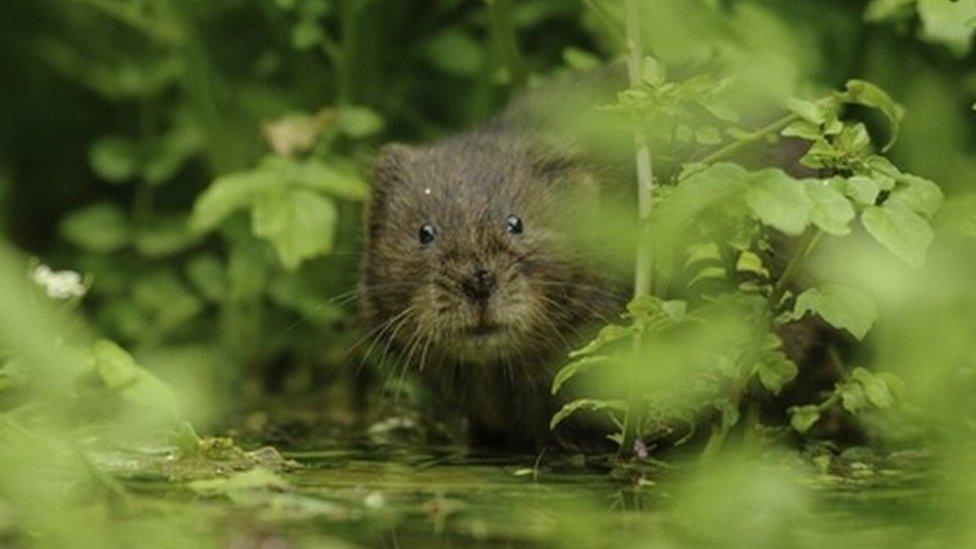Water buffalo boost wildlife at nature reserve
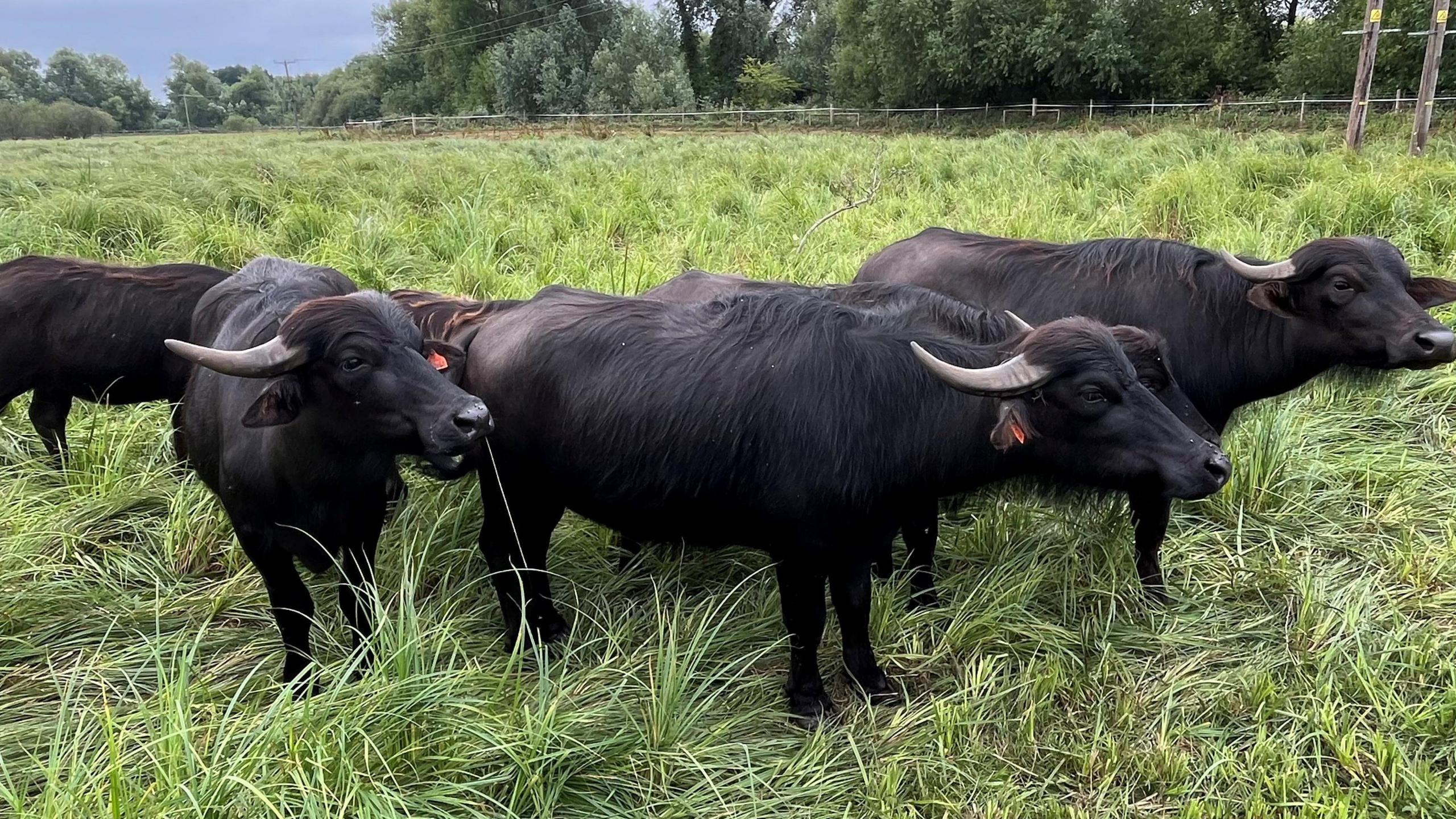
The animals originate from Asia, where they are found in wet habitats such as riverbanks and marshlands
- Published
A herd of water buffalo introduced to a wetland two years ago is having a positive effect on wildlife, a charity has said.
Herts and Middlesex Wildlife Trust said the animals, based in Wivenhoe in Essex, had been returned to Thorley Wash Nature Reserve for a third year to graze ditches, waterlogged marshy areas and wet grassland.
Reserves officer Kathryn Dunnett said biodiversity had improved, with vegetation turning greener and more wildflowers appearing.
The 13-hectare site (32 acres), to the south of Bishop's Stortford, is a designated Site of Special Scientific Interest.
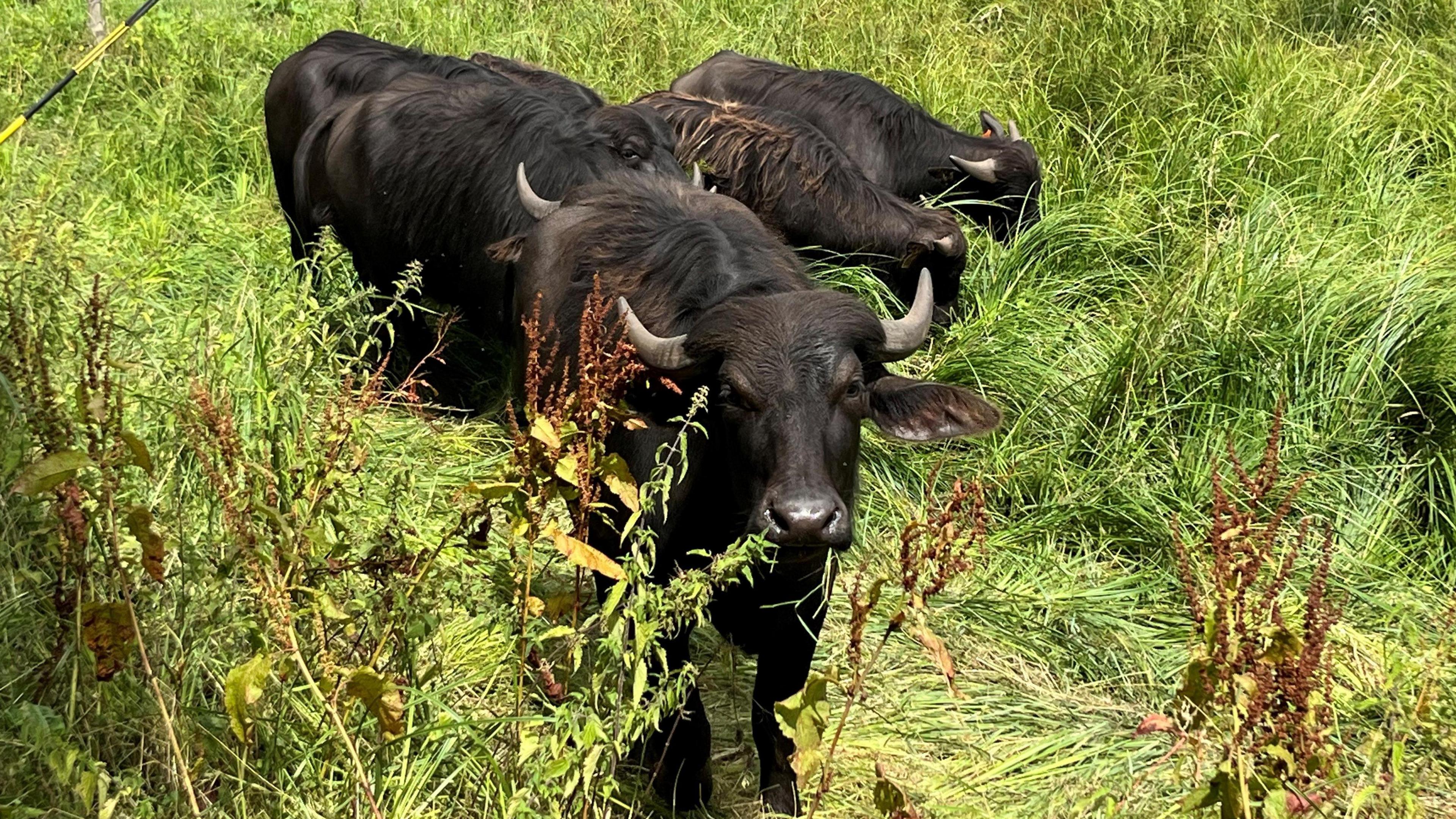
The buffalo were sent from Sunnymead Farm in Wivenhoe to graze on the reserve
The species is "hardier and more tolerant of waterlogged conditions than domestic cattle and better suited to the conditions at Thorley Wash", the charity said.
"They clear the dense and scrubbier vegetation to improve that habitat, which it is hoped will help species such as endangered water voles, successfully reintroduced to Thorley Wash in 2015."
If they were not employed, heavy machinery would have to be brought in to keep the ditches clear, it added.
Ms Dunnett said: "Year on year, we've expanded the area that the water buffalo have grazed at Thorley Wash and we are really pleased with the effect they are having on the habitat.
"We are seeing the vegetation take on a much greener appearance – they are clearing the dead matter and the composition of the vegetation looks to be changing, with a bit less sedge and more grasses."

Volunteers have worked to mend the fence on the nature reserve
Senior reserves officer Dan Townsend said volunteers had been instrumental in enabling the water buffalo to graze, by checking them and flagging up any concerns they have.
"We really couldn't do this without the support we get from our fantastic volunteers", he added.
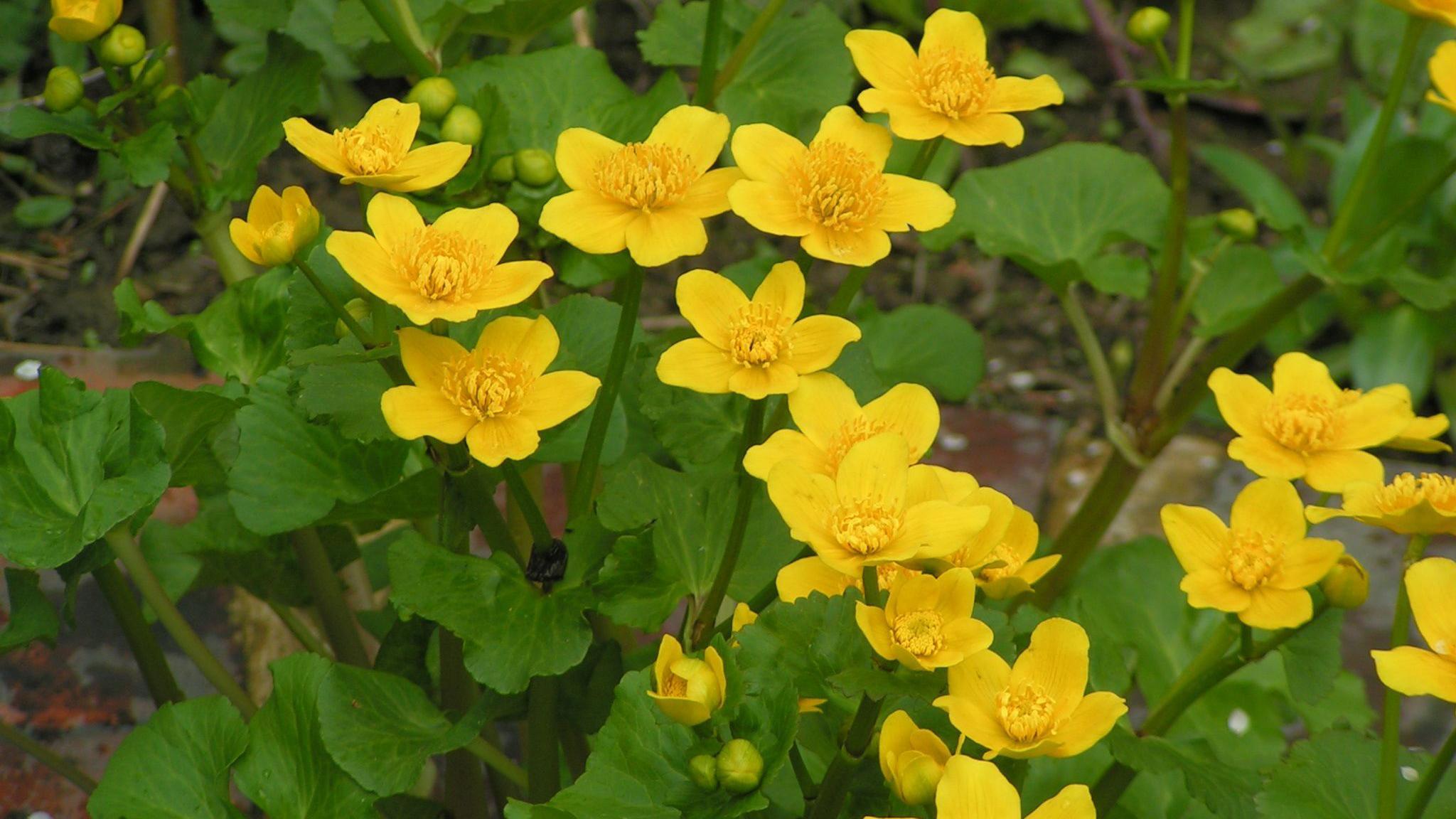
More marsh marigolds have grown on the reserve, the charity said
Get in touch
Do you have a story suggestion for Beds, Herts & Bucks?
Follow Beds, Herts and Bucks news on BBC Sounds, Facebook, external, Instagram, external and X, external.
Related topics
- Published25 July 2023
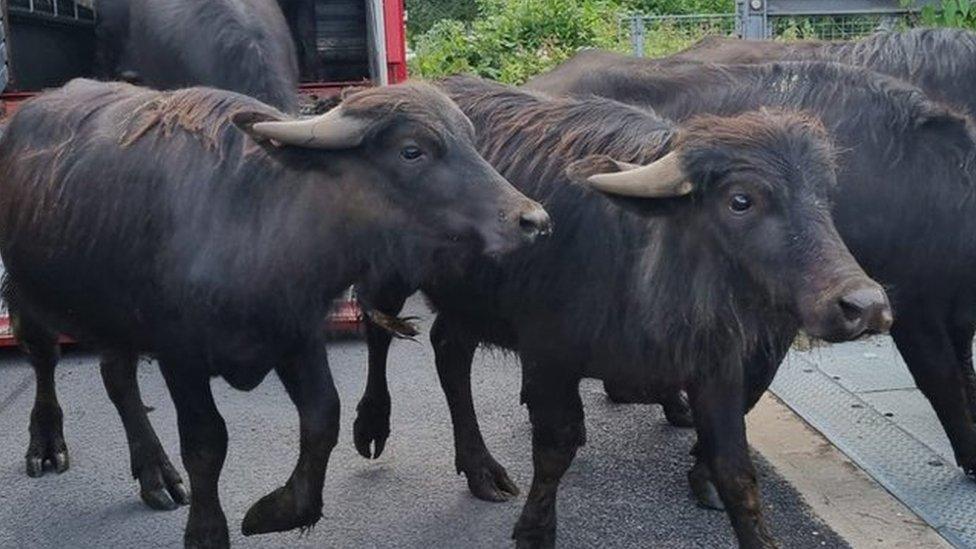
- Published28 February 2024
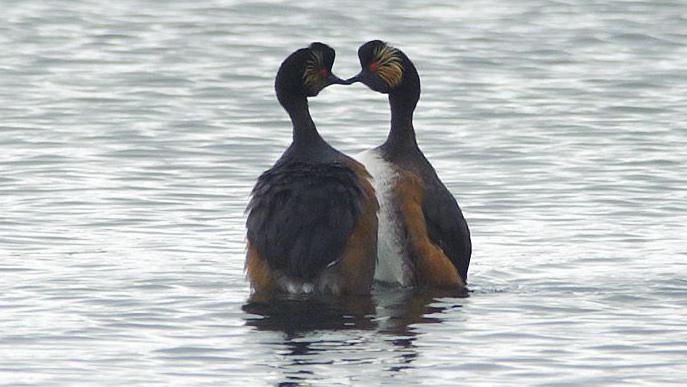
- Published3 December 2020
